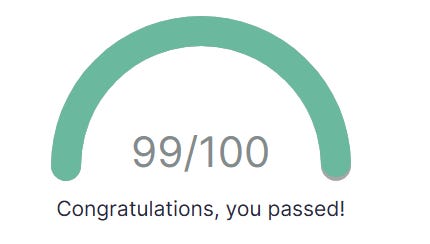The Red Team Operator Course, or RTO, is not your typical penetration testing certification; it’s a deep dive into the art of post-exploitation, focusing heavily on privilege escalation and lateral movement within an enterprise environment. If you’re looking to elevate your red team skills and get hands-on with a prominent Command and Control (C2) solution, read on.
What is RTO? The Course Breakdown
RTO is an introductory to intermediate-level course centered entirely around Red Team operations. The key differentiator? You work fully from Cobalt Strike, a Windows-based C2 framework widely used in real-world engagements. The ultimate goal of the exam is to successfully evade EDR/AV on multiple systems while working towards accomplishing the unique tasks and challenges encountered.
https://www.zeropointsecurity.co.uk/course/red-team-ops
As you’ll see in the syllabus, the course covers an impressive array of high-level concepts, equipping you with a well-rounded skill set:
- Cobalt Strike: A primer to get comfortable with the C2 framework.
- Initial Access & Persistence: Payloads, droppers, scheduled tasks, and maintaining access after a reboot.
- Post Exploitation & Credential Access: Session passing, file system access, token impersonation, and “pass the hash.”
- Privilege Escalation & Elevated Persistence: Techniques like DLL hijacking, weak service permissions, and gaining/maintaining SYSTEM level access.
- Discovery & Lateral Movement: Using tools like Bloodhound and techniques (WinRM, PSExec, LOLBas) to move across the network, including custom, Opsec-safe methods.
- Pivoting: Using SOCKS proxies and reverse port forwarding to maneuver around firewalls.
- Advanced Attacks: Kerberos attacks (delegation, ticket forgery), SQL server exploitation, and Domain Dominance (DCsync).
- Forest and Domain Trusts: Moving laterally and escalating privileges across multiple domains.
- Defense Evasion: Tuning Cobalt Strike with Artifact/Resource Kits and bypassing AppLocker.
The Fine Print: Unlimited Training with Caveats
The RTO course offers unlimited access to the labs and exam attempts — a feature you truly can’t beat for the price (around $600). However, there are a couple important constraints to be aware of:
- Lab Spawning: Labs can only be spawned a maximum of 3 times per day.
- Exam Spawning: The exam can only be retaken once per week.
While the spawn limits might sound restrictive, it’s not a major issue as you can pause the exam as much as you need to within the 48-hour timeframe over a 7-day period. These constraints did not seem to get in the way of completing the course, so don’t get discouraged as you encounter them. Personally, I much prefer to have a few spawns a day and the affordability of the course, instead of having to pay thousands of dollars like other courses.
My Strategy: Why Iterative Failure is Your Friend
The course is structured to be challenging, and frankly, many students fail the exam multiple times. I believe this is by design. The labs provide the technical content, but they are often heavily “hand-holding”: commands are provided for easy copy/paste, and defenses are often disabled. This makes it easy to complete the labs without truly internalizing the “why” and “how.”. That said, during the exam, the “gloves” come off and there was zero hand holding.
Here is the recipe I used for eventual success:
- Initial Lab Run-Through (The Speed Run): Go through all the labs, reading the concepts, copying the commands, and completing the objectives. Don’t worry about being an expert. The goal is a high-level conceptual understanding. I spent about 20 hours on this phase.
- Move Directly to the Exam (The Unorthodox Lab): This is where I diverted from the typical “study harder” path. Given the lab time limits (15–30 minutes per lab) and spawn constraints, I chose to use the 48-hour, open-notes exam as my primary, pressure-cooker “lab.”
- The Logic: The exam gives you ample time and forces you to repeat the techniques learned in the labs, but this time with defenses fully enabled and no easy copy/paste guides.
- The First Attempt: My first attempt was a deliberate “recon” mission. I broke every rule (disruptive testing, ignoring Defense Evasion) to understand the full attack path and identify the key challenges. I failed but made it most of the way.
- Iterative Success: My scores were roughly 66%, 77%, and then final victory at 99%. Each failure forced me to hone my Defense Evasion techniques and deeply understand the mechanics of the attacks.
Time Commitment:
- Initial Labs: ~20 hours
- Exam Retakes: ~120 hours total across all attempts
So, you can very much pass the RTO course in about one month by committing to either the iterative failure model or a more intensive upfront study.
The Support System
One of the highlights of the course is the Discord RTO community channel. The community is incredibly supportive, offering “sanity checks” and moral support. Rastamouse, the course developer, is highly responsive and active in the channel. While the mentality is “tough love” and “read the manual,” the ultimate goal is to see you succeed.
Final Verdict
The Red Team Operator Course is phenomenal. It provides reliable, hands-on training with Cobalt Strike — a C2 solution that is often cost-prohibitive for individuals or smaller teams. You won’t be using your own toolset; you’ll be mastering the tools they provide on the attack machine, making the experience highly relevant to real-world, Opsec-conscious operations.
If you are looking for Red Team training that moves beyond a standard pen-test certification and gives you in-depth experience with a C2 solution, RTO is a must-buy. — — — I am highly anticipating the RTO2 course, the next level advanced course to be launched soon (hopefully).
Learn more about Certified Red Team Operator (CRTO): An Honest Review and Strategy Guide
